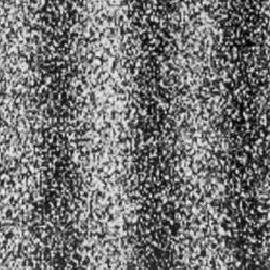Researchers at the California Institute of Technology (Caltech) have demonstrated that quantum entanglement can simultaneously transmit entire blocks of quantum information, providing proof of quantum hard disks of the future.

Researchers at the California Institute of Technology (Caltech) have demonstrated that quantum entanglement can simultaneously transmit entire blocks of quantum information, providing proof of quantum hard disks of the future.
The Caltech team claims that the device is the prototype of quantum disks that use quantum entanglement to access data. In their demonstration, the team changed the contents of four quantum memories into optical signals and back. According to team members, this principle could be extended to any number of bits at the same time, thus enabling the application of quantum disks.
"We have shown four communicating quantum memories with four channels that can also be coherently absorbed using the electromagnetic transparency feature that slows the speed of light to zero for storage."
According to Kyung Soo Cho, a doctoral student at Caltech, the quantum entanglement developed at Caltech involves using lasers to cool the four quantum memories - each containing a collection of about a million cesium atoms separated by a magnet, one millimeter apart. The magnetic spin of each atom in the quantum memory can be in one of the states - up and down which can be translated as 0 or 1. The memory is encoded using the laser beam encoding. The spin wave of the four quantum memories is quantum entwined. This technique known as "measurement driven interleaving" was first achieved at Caltech four years ago, but only with two memories at the same time. The team has now theoretically demonstrated that the system can be scaled to an unlimited number of nodes.

11 תגובות
It is not very impressive to save 4 bits on 4 million atoms.
I just understood that each atom represents a bit
Because its spin can be zero or one.
emir,
A lot of atoms are needed to store the information, since the noise in a proportional system is inversely proportional to the number of atoms. I would bet that the noise depends like one square root of the number of atoms, but in quantum systems the behavior is sometimes different. In any case, the signal-to-noise ratio increases as there are more atoms.
There are 16 separate states that can be represented by these 4 qubits. The first qubit can be 0 or 1 as applicable for the second, third and fourth. Therefore there are 2*2*2*2 possibilities to populate the states.
emir
It's probably like Schrödinger's cat. You will never know how much memory there is.
Until the wave function crashes and you get a blue screen in windows to other universes.
I didn't understand, what is the significance of the amount of a million atoms in each memory?
If there were only a thousand, or only 100 atoms in each memory, how would it affect the amount of data that can be stored in this array?
How many digits (1, 2, 3, 4....) can be stored in the above four memories?
I will be happy to answer.
Thanks.
Yair,
As far as I understand, there are only four quantum memories where each quantum memory consists of about a million cesium atoms. The idea is to keep the information found in the electromagnetic radiation in the cesium atoms and their coherent motion. The light hitting the cesium atoms is absorbed by them, but the information about it is in their relative motion and can be reproduced. In such an array, information can be stored as in four qubits, so I assume that it allows storing 2 to the power of 4 numbers.
Or maybe 4 qubits?
"The four quantum memories - each contains a collection of about a million cesium atoms"
Did anyone figure it out?? Because I didn't understand anything.
What is the amount of data that can be saved in this array?
4 bits? 4 million bits? Another number?
Really incomprehensible, inexplicable.
It seems to me that we have exhausted the quantum calculation. You should start with experiments on a quark computer.
Another step on the way to the development of a quantum computer, and data calculation capabilities that will advance the future of humanity, from a scientific point of view, forward. Kudos to the scientists.
I wrote
seriously -
Who approves such articles? And why are they not proofread??